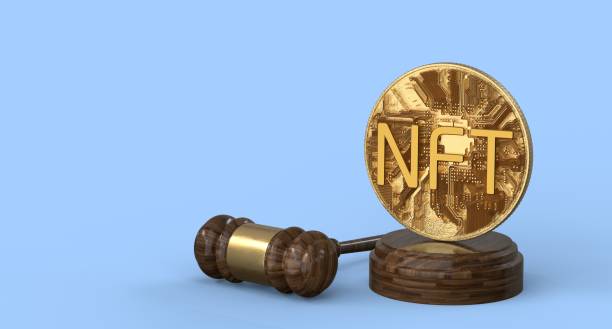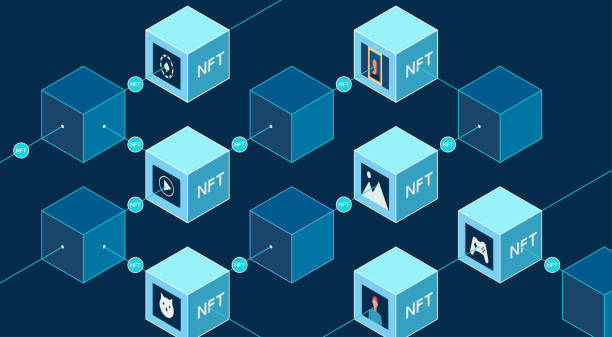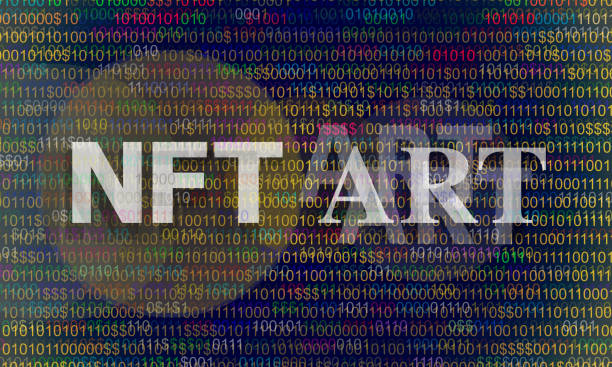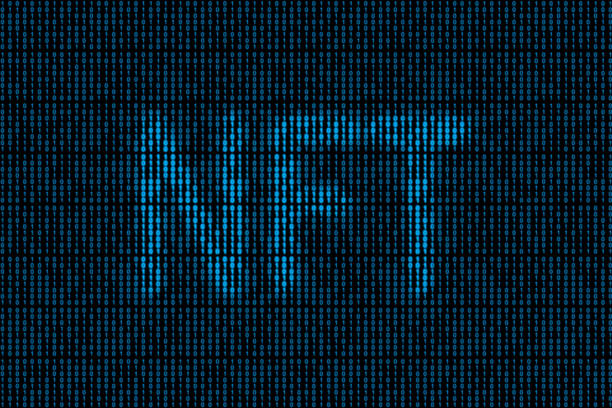When the non-fungible tokens (NFTs) are taken under legal and juridical perspectives, experts agree that the field is still in its evolution phase. Today, there are more questions than answers surrounding this nascent sector.
In most cases, a non-fungible token is a representation of a digital or physical asset that only exists on the internet. It can be described as a programmable piece of art. NFTs are designed to offer full ownership of an underlying asset, like music or painting. They can also represent a digital asset that exists in the form of a software code.
Therefore, experts mostly conceptualize NFTs in an exhaustive technical view:
“An NFT is a pattern of smart contracts that provides a standardized way of verifying who owns an NFT, and a standardized way of ‘moving’ non-fungible digital assets.”
It is always crucial to check what non-fungible tokens mean digitally before determining their legality. In general, an NFT represents a non-fungible asset digitally in the form of a unique serial number.
Many judicial and legal issues exist whenever the thought of a serial number representing any form of an asset on digital media is discussed. What components make up the code? It is always important to remember that nonfungible tokens show where the content of the assets they represent has been located since their inception.
Owning Non-fungible Tokens
The question arises: is owning an NFT any different from owning some rights of the underlying asset that supports it? In the current world, we are familiar with pieces of paper that show and represent property rights. Most people have already encountered these papers in their daily lives.
Some of these papers comprise a lease to a house, a deed to a property, and a certificate of vehicular ownership. Notably, some value is attached to these legal pieces of paper. That is an excellent way to look at NFTs, although some differences about the rights are related to them.
Currently, there is a growing perception that an NFT is an original asset by itself. However, is that perception correct? Isn’t a nonfungible token a receipt of owning some determined asset? Just like everything else that exists in the world of law and legal matters, the correct answer is: it depends on the prevailing situation.
Also, the type of underlying asset determines the legality and rights of the NFT. A nonfungible asset can be an asset that exists in the virtual world like CryptoKitties and CryptoPunks or an original physical asset.
An NFT can also be the receipt that confirms that one owns a determined asset in the real world. It includes real estate and any physical art pieces that are exhibited at various locations like in the Louvre Museum in Paris. In that context, some challenges exist for the internet-era content creators that could be solved by registered NFTs via blockchain technology.
Blockchain Helps NFT-Represented Content Creators
Since the launch of the internet and peer-to-peer (P2P) networks, the industry and intellectual property content creators have been looking for methods of altering assets, copyrighting them, and eventually proving their scarcity and property value in a digital world.
It was crucial to come up with a registering infrastructure that may offer immutability and precedence while proving the asset’s scarcity on the internet. All these developments seemed possible after the double-spending challenge that was resolved by the development of blockchain technology.
An NFT registered via blockchain makes the marketed content on the internet wholly immutable and unique. That change enables artists to protect their creations avoiding falsification and duplicity in the virtual world.
Hence, all the blockchain-registered NFTs are ideally designed to resolve digital piracy issues and the huge costs that come with financial intermediation. With all these developments, the new type of economy has become feasible. The digital economy is governed by the participant who produces and develops value and not the traditional trust validators.
Imperative Rights For An Individual To Create NFTs
DC Comics sent a notice this spring for all artists involved in the creation of their superheroes. They banned the commercialization of art with their characters for example in the case of the digital production of NFTs.
Probably, news that came up about former DC comic artist, José Delbo, who auctioned a Wonder Woman NFT for $1.85 million got the company’s attention, resulting in their reaction. Not all artists and creators own the copyrights of their work.
In most cases, the artists do not have to worry about the rights of property or copyrights of their work, because they are the creators. The artists hold all that is known in the world of intellectual property and the whole idea of rights.
But, the main practice of the creator economy is that the rights to any type of work of art or music are allocated to many parts: one of the parts holds distribution rights while the other owns the exhibition rights. Another part may control performance rights while the other holds marketing rights.
What if an artist can create a nonfungible token of the work but all copyrights get allocated to all involved parties, the best question would be: which among all the rights holders would have the perfect and appropriate legal status to do it? Can every member of the involved parties do it unilaterally without looking for support from other rights holders?
The issue may consume lots of time to resolve judicially and legally. For now, as the hype of nonfungible tokens is still new and evolving, the legal challenges are yet to be resolved. Who has the right to coin NFTs and what does it mean? While blockchain technology and most decentralized marketplaces evolve concurrently, these questions may prove to be the primary object of judicial demands and will get decided case by case.
It seems impossible to develop universal legislation that will encompass all situations that are in constant change. There is still a lot of confusion that arises within the nonfungible token space, not only about the rights assigned to the creators but also what the buyers are getting through the purchase of nonfungible tokens.
The judicial analysis of this nascent sector is quite complicated, mainly in the case of NFTs property that features many authors and their copyrights. Another issue that needs consideration is how the platforms have managed to issue content terms and how the content-intermediate companies deal with NFTs.
Many of the involved intermediate companies between the NFT buyers and content creators must do their judicial work by applying some precise and reasonable diligence whenever they create the platforms.
It becomes complicated when there is a co-authorship incident in a determined creation, mainly when owners of the copyrights for the created contents are companies. Will the nonfungible tokens be changed or pushed to protect intellectual property portfolios owned by the companies, and if the answer is yes, how exactly will all that happen?
Rights That NFT Purchases Give Buyers
When a nonfungible token is acquired, three parties have to be considered: the NFT creator, the author of the original work, and the buyer of the NFT. It is critical to note that owning an NFT does not mean buying the property of the underlying asset, but instead it comprises getting the property of the nonfungible token.
Nevertheless, since NFTs thrive only in digital media that has no borders and is simultaneously active in many jurisdictions, it is crucial for all platforms that list the NFTs to specify the underlying terms and conditions. The NFTs may also exist and be traded in regions where the law is entirely nonexistent.
The involved terms of the transaction can be used in smart contracts to define what rights the NFT buyers get from the creators. At that point, it becomes crucial to know whether the buyer is getting ownership of the real asset or obtaining the intellectual property rights of the work. Hence, the reasoning is never different from the acquisition of the physical piece of art that exists in the traditional market.
If a painting is bought in an auction, the buyer never gets the intellectual property rights of the asset itself. In such a case, the buyer has the rights to hand their new painting on the wall and has no intellectual property of the painting unless it has been entirely commissioned. Therefore, it is illegal to make posters of the painting on the wall. It means that nobody can create or change it.
It means that the terms of use and whom one buys the NFT from are quite critical. Moreover, the overwhelming silence surrounding the transmission of intellectual property rights means that these digital assets cannot be held. It is important to note that a majority of these platforms and markets are not explicit about the issue.
Buyers need to protect themselves by clarifying all involved information to get rid of all ambiguity doubts. In general, by buying a nonfungible token, one just gets the rights to the purchased nonfungible token and ownership rights to brag about having some defined connection to the work.
But, one has no intellectual property rights to use the work. Thus, nobody has the right to copy, distribute, or execute the work unless all these rights have been designated. Legal analysis of an NFT is therefore similar to what would be the case with the traditional intellectual property rights as if no nonfungible tokens existed.
How To Determine An NFT’s Jurisdiction
Hypothetically speaking, copyright in France is perpetual meaning that it lasts forever. On the other hand, it expires with the author’s death in the United States while Canada protects the copyright for 50 years after the author’s death. If these nonfungible tokens are registered on decentralized blockchains, how is the jurisdictional issue approached? What laws are applicable in that case?
For a wholly decentralized platform that is distributed throughout the internet, what rights are applicable? Will the jurisdiction be based on where the artist lives or will the jurisdiction be applied between the platform and the creator of the NFT?
As time goes by, many jurisdictional issues will come up, mainly when dealing with such a sector that is in its early development stages and its growth is still in progress. For now, we are still in unchartered waters of regulating the nascent NFT industry and challenges exist in identifying how the nonfungible tokens markets will move through the paths of legal protections.












